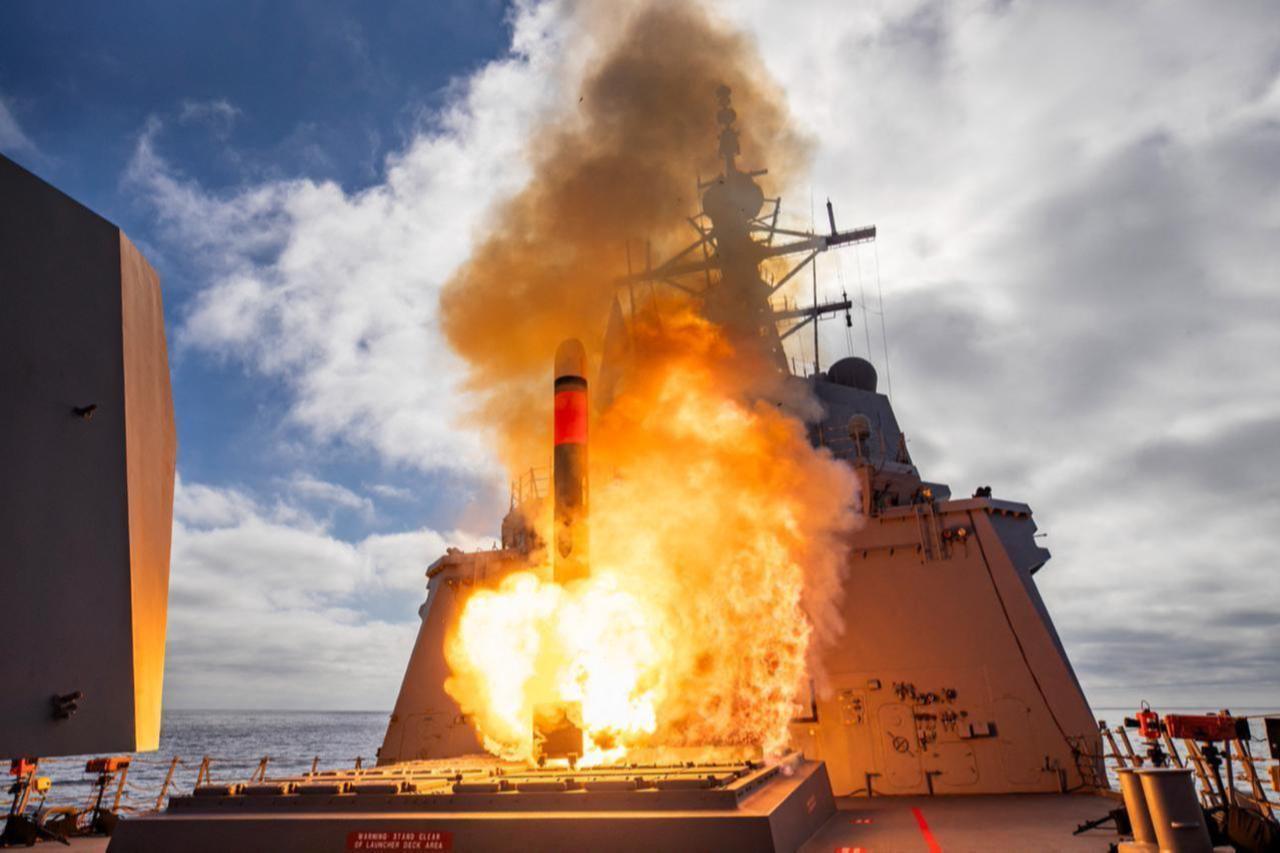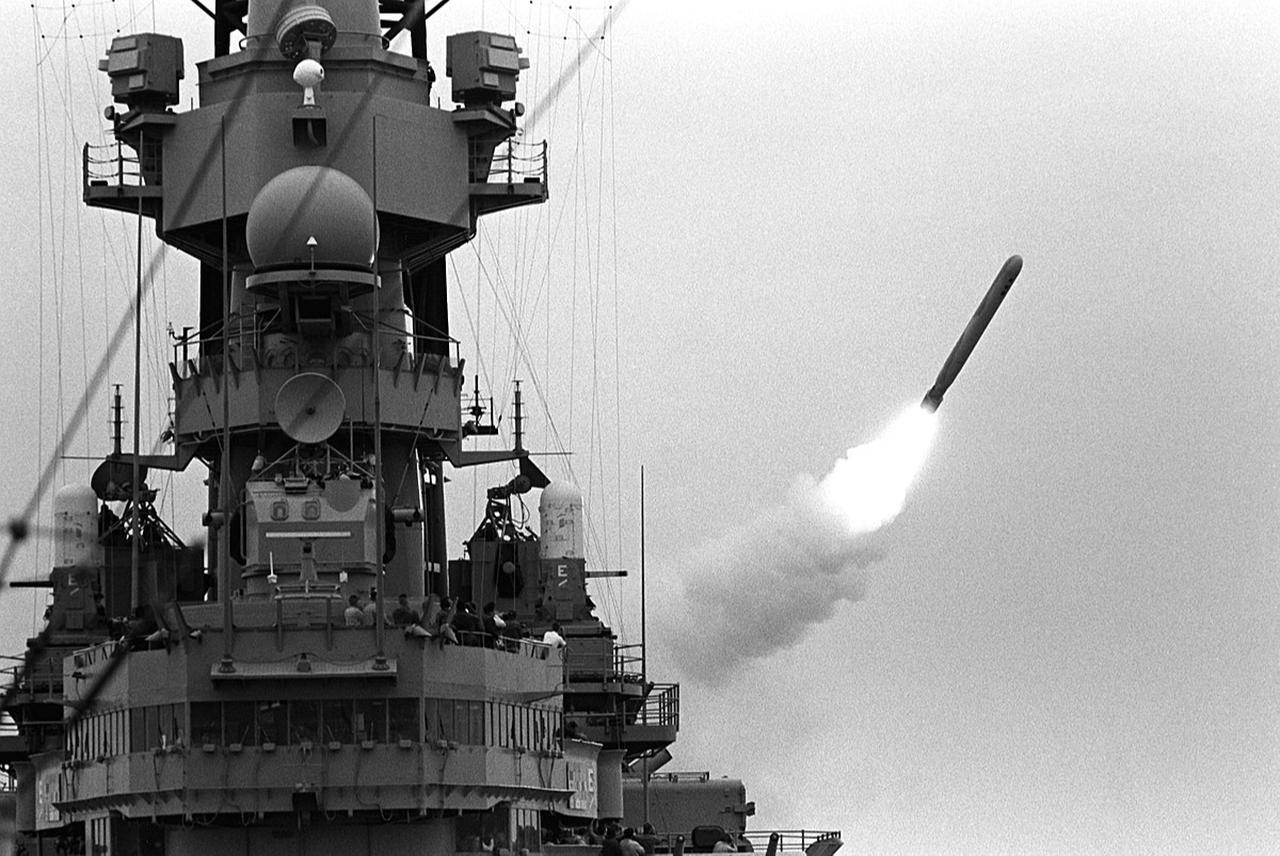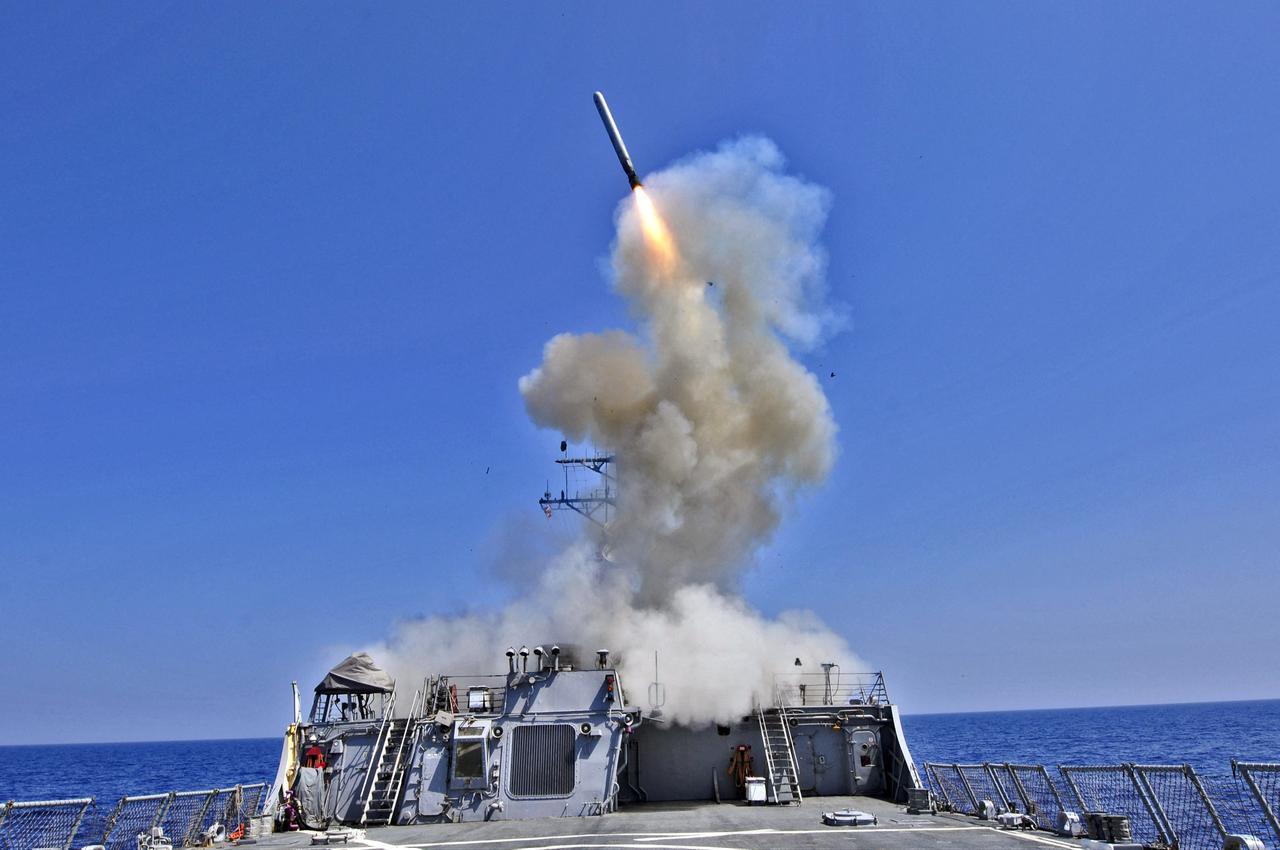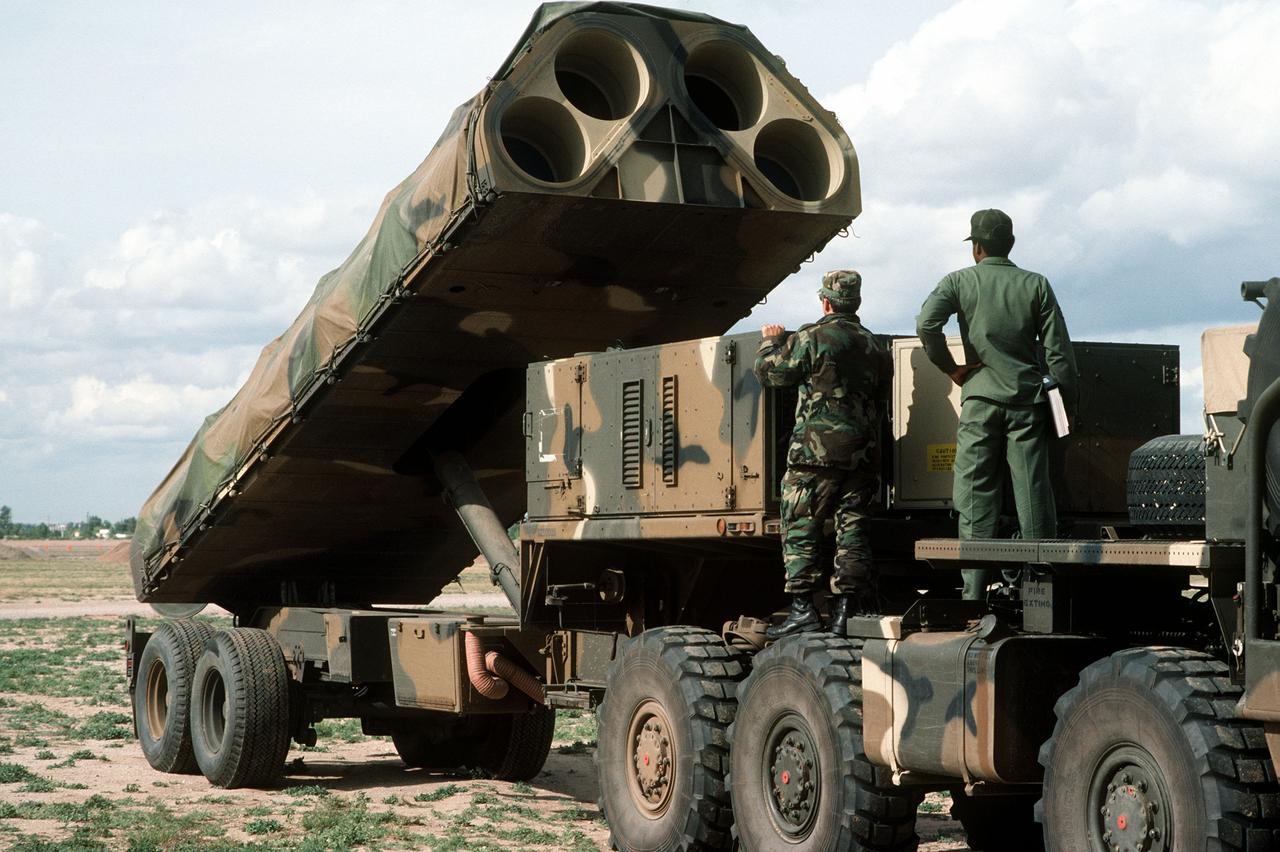
U.S. President Donald Trump said Friday he would discuss Ukraine's request to purchase American long-range Tomahawk cruise missiles during his meeting with Ukrainian President Volodymyr Zelenskyy at the White House, while expressing optimism that the weapons might not be needed.
"We'll be talking about what took place yesterday with my phone call with President Putin, and I think that things are coming along pretty well," Trump told reporters alongside Zelenskyy. The president added they would discuss "the possibility of sending Tomahawk cruise missiles to Ukraine, but that 'hopefully, they won't need it.'"
"Hopefully we'll be able to get the war over with without thinking about tomahawks. I think we're fairly close to that," Trump said.
Earlier this week, Trump acknowledged Zelenskyy's interest in acquiring the weapons, stating simply: "We have a lot of Tomahawks."

The BGM-109 Tomahawk Land Attack Missile is one of the most extensively used weapons in the Pentagon's arsenal. Development began in the early 1970s at the Applied Physics Laboratory of Johns Hopkins University under James H. Walker near Laurel, Maryland. The missile emerged as a modular cruise missile first manufactured by General Dynamics.
The United States military first deployed Tomahawks in combat during the 1991 Persian Gulf War. Since then, the weapon has been used in dozens of conflicts, with the United States launching more than 2,300 Tomahawks in combat over more than four decades. The most recent versions cost roughly $2.5 million each.
The Tomahawk is an all-weather, jet-powered, subsonic cruise missile currently used by the United States Navy, Royal Australian Navy, Royal Netherlands Navy and Royal Navy in ship and submarine-based land-attack operations.

The Tomahawk's design centers on its cruise missile architecture: powered by a small jet engine with wings to produce lift, allowing it to fly like an airplane that guides itself to a target. When in cruise mode, the missiles can fly low to the ground, making them more difficult to spot by radar. They also fly relatively fast at 550 miles per hour, or roughly 70 percent the speed of sound.
The missile's range exceeds 1,000 miles, which would give Ukraine the ability to strike Moscow from Kyiv—a distance of approximately 500 miles. This range would make Tomahawks the longest-range U.S. weapons given to Ukraine thus far.
The missiles typically carry a warhead with the explosive equivalent of about 400 pounds of TNT. Cluster weapon versions of the Tomahawk also exist, the most common of which carries 166 small bomblets. That type was most recently used in December 2009 during a U.S. attack on alleged Al Qaeda training camps in Yemen.
Another classified variant is designed to temporarily disable an adversary's electrical grid by releasing small canisters of carbon fiber filaments that blanket electrical transmission lines and cause transformers and other equipment to short.
The Tomahawk uses multiple guidance systems to find its targets. Originally designed to use data fed into its guidance computer before launch—including terrain contour maps to verify its location and digital photos of the target—later versions incorporated GPS guidance and radio antennae that allowed the missiles to be redirected to a new target after launch. The missiles are maneuverable weapons that can change course to fly around obstacles like enemy air defenses, buildings or mountains before they reach their target.

Ukraine would likely receive Tomahawks through a land-based system rather than naval platforms. In 2024, the U.S. Army deployed a new ground-based launcher for Tomahawks and other naval missiles called Typhon, which is essentially a standard 40-foot shipping container concealing four missile tubes that rotate upward to fire. The Army first test-fired a Tomahawk from that launcher in 2023.
The Pentagon developed Typhon rather quickly after the Intermediate-Range Nuclear Forces Treaty between Russia and the United States—which had banned land-based cruise missiles—collapsed in 2019. Army soldiers first deployed Typhon to the Philippines in 2024 as a show of force to China. The launchers were later sent to Australia for an exercise in July and to Japan in September.
Like any cruise missile, the Tomahawk needs assistance before it can begin flying to a target on its own. The U.S. Navy's Tomahawks use a solid-fuel rocket motor to boost the missile up to about 1,500 feet above the surface. The rocket motor falls away, the missile's wings unfold and the air intake for the jet engine opens, allowing the Tomahawk to begin flying like an airplane.
Ukrainian troops would not require extensive training to operate the system. In the summer of 2022, Ukraine's army quickly learned another American-made mobile launch system called HIMARS, which fires guided rockets to a range of more than 70 miles and ATACMS missiles out to 190 miles. While the Typhon system is different in some respects, it also requires soldiers to input data into a fire control computer before launch. The Pentagon would probably also send the equipment needed to compile the flight-planning information that the missile requires, or would have to supply Ukraine with data packages for targets inside Russia.
The Tomahawk has undergone numerous upgrades since its introduction. The missile's manufacturing history has seen several transitions, with General Dynamics serving as the sole supplier in the 1970s. From 1992 until 1994, McDonnell Douglas was the sole supplier, producing Block II and Block III versions.
In 1994, Hughes Aircraft, having purchased General Dynamics' missile division in 1992, outbid McDonnell Douglas to become the sole supplier. A joint venture between Hughes and Raytheon manufactured the missile from 1995 until Raytheon's acquisition of Hughes in 1997. As of 2024, Raytheon remains the sole manufacturer of non-nuclear, sea-launched Tomahawk variants.
The missile exists in multiple configurations. The BGM-109C Tomahawk Land Attack Missile – Conventional carries a unitary warhead, while the BGM-109D variant carries cluster munitions. The BGM-109A nuclear variant with a W80 nuclear warhead was retired from service sometime between 2010 and 2013. An anti-ship variant with active radar homing was withdrawn from service in 1994 and converted to Block IV version.
Block III TLAMs that entered service in 1993 can fly farther using their new turbofan engines and use Global Positioning System receivers to strike more precisely. Block IV TLAMs, introduced in 2006, have an improved turbofan engine that allows them to get better fuel economy and change speeds in flight.
The Block IV missiles can loiter better and have electro-optical sensors that allow real-time battle damage assessment. They can be given a new target in flight and can transmit an image, via satellite communication, immediately before impact to help determine whether the missile is on target and the likely damage from the attack.
Tomahawk Block V was introduced in 2021 with improvements to navigation and in-flight targeting. Block Va, the Maritime Strike Tomahawk, allows the missile to engage a moving target at sea. Block Vb is outfitted with a joint multi-effects warhead for hard-target penetration. All Block IV Tomahawks will be converted to Block V standard, while the remaining Block III missiles will be retired and demilitarized.
In 2016, the U.S. Department of Defense purchased 149 Tomahawk Block IV missiles for $202.3 million. Because of their long range, accuracy and low cost compared to piloted warplanes, Tomahawks have long been seen as a go-to weapon in the Pentagon's arsenal. Perhaps most useful for Ukraine, the United States has many hundreds of them.